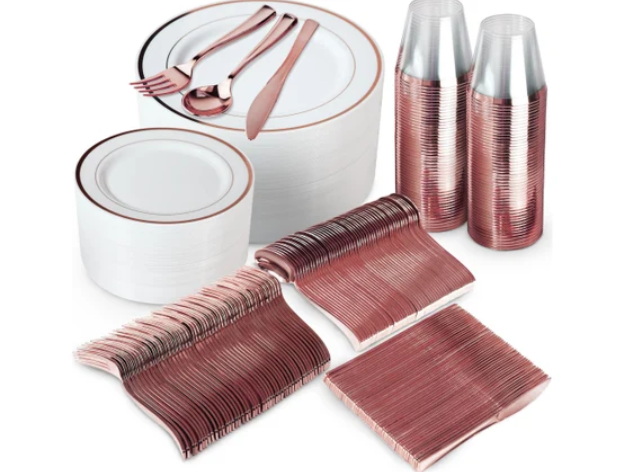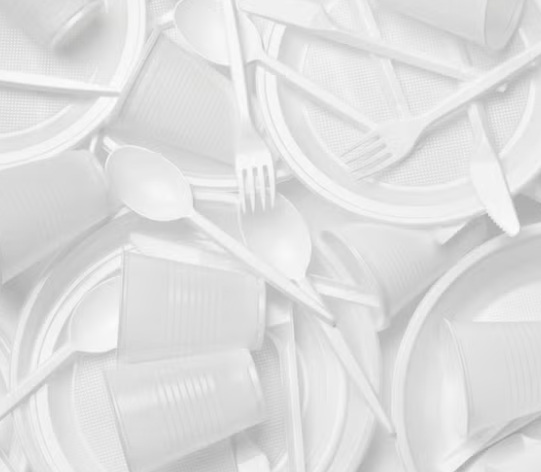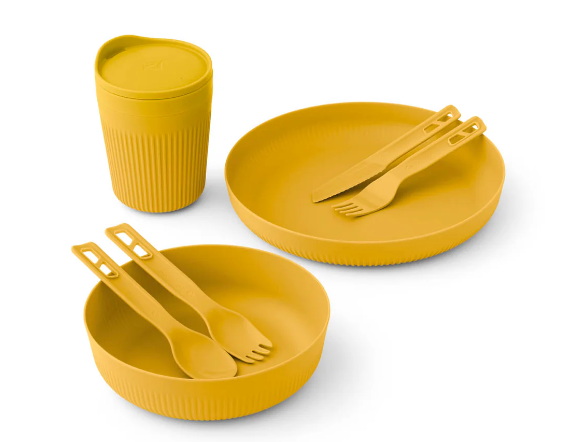
Content Menu
● Introduction to Disposable Spoons and Forks
>> Types of Disposable Cutlery
● Disposable Spoon and Fork Price
>> Factors Influencing Price
>> Price Comparison
● Environmental Considerations
>> Edible Cutlery
● Impact on Industries
>> Food Service Industry
>> Healthcare Industry
>> Event and Party Industry
● Production Process and Innovations
>> Plastic Spoon and Fork Molds
>> Technological Advancements
● Market Trends and Growth
>> Market Size and Forecast
>> Sustainability Initiatives
● Alternatives to Traditional Plastic Cutlery
>> Wooden and Bamboo Utensils
>> Plant-Based Materials
● Environmental Impact of Plastic Cutlery
>> Plastic Pollution
>> Sustainable Solutions
● Conclusion
● Frequently Asked Questions
>> 1. What is the typical price range for disposable spoons and forks?
>> 2. What are the main types of disposable cutlery?
>> 3. How does the material affect the price of disposable cutlery?
>> 4. What are some eco-friendly alternatives to traditional plastic cutlery?
>> 5. How do environmental considerations impact the demand for disposable cutlery?
● Citations:
Disposable spoons and forks are widely used in various industries, including food service, healthcare, and event planning, due to their convenience and hygiene. However, with increasing environmental concerns, the demand for eco-friendly alternatives is rising. In this article, we will explore the average price of disposable spoons and forks, their types, and the impact of environmental considerations on their pricing.

Introduction to Disposable Spoons and Forks
Disposable spoons and forks are made from plastic materials like polystyrene (PS) or polypropylene (PP), which are lightweight, affordable, and easy to use. They come in different shapes and sizes, including child and adult sizes, and may be color-coded for specific uses, such as in hospitals.
Types of Disposable Cutlery
1. Regular Cutlery: Suitable for daily use, these are made from standard plastic materials and are ideal for light meals.
2. Heavy-Duty Cutlery: Thicker and more durable, these are used for serving heavier meals and can be reused in some cases.
3. Biodegradable Cutlery: Made from materials that can break down naturally, these are an eco-friendly alternative to traditional plastic cutlery.
Disposable Spoon and Fork Price
The price of disposable spoons and forks varies based on the type, material, and quantity purchased. Generally, the cost can range from $0.01 to $0.06 per piece, depending on the supplier and the minimum order quantity (MOQ).
Factors Influencing Price
- Material: Biodegradable cutlery tends to be more expensive than traditional plastic due to the cost of raw materials.
- Quantity: Larger orders typically result in lower per-unit prices.
- Supplier: Prices can vary significantly between different suppliers based on their production costs and market strategies.
Price Comparison
| Supplier | Price Range | MOQ |
| Alibaba | $0.02-$0.03 | 10,000 pieces |
| Made-in-China | $0.01-$0.02 | 10,000 pieces |
| WebstaurantStore | $0.02-$0.06 | Varies by product |
Environmental Considerations
With growing awareness of plastic waste, there is a shift towards biodegradable and compostable cutlery. These alternatives are made from renewable sources like corn starch and can reduce landfill waste significantly.
Edible Cutlery
A recent innovation is edible cutlery, made from natural ingredients like sorghum flour, which offers a sustainable alternative to plastic. This option not only reduces plastic waste but also provides a unique dining experience.
Impact on Industries
Disposable spoons and forks are used extensively in various sectors:
Food Service Industry
Restaurants and cafes use disposable cutlery for takeout and outdoor events to reduce washing and reuse needs. Biodegradable options are gaining popularity for their environmental benefits.
Healthcare Industry
Hospitals and nursing homes prefer disposable cutlery for hygiene and safety reasons, especially for patients with compromised immunity.
Event and Party Industry
Caterers use disposable cutlery for convenience and to reduce cleanup efforts at events like weddings and conferences.

Production Process and Innovations
The production of disposable spoons and forks involves the use of specialized molds. These molds are designed to shape molten plastic into precise, standardized utensils, ensuring consistency and hygiene in the final product.
Plastic Spoon and Fork Molds
Plastic spoon and fork molds are crucial in the manufacturing process. They are engineered to produce durable yet lightweight utensils, catering to various applications across different industries, including food service and healthcare[1].
Technological Advancements
Technological innovations in mold manufacturing have improved production efficiency and sustainability. Advanced materials and injection molding techniques reduce waste and enhance mold longevity, contributing to more eco-friendly production processes[1].
Market Trends and Growth
The disposable cutlery market is experiencing steady growth due to factors like urbanization, busy lifestyles, and the rise of food delivery services. However, environmental concerns are driving a shift towards sustainable alternatives.
Market Size and Forecast
The global disposable cutlery market is projected to grow significantly, with a compound annual growth rate (CAGR) of around 6.9% by 2029[3]. This growth is driven by increasing demand for biodegradable materials and sustainable packaging solutions.
Sustainability Initiatives
Manufacturers are focusing on eco-friendly materials and production methods to address environmental concerns. Biodegradable and compostable cutlery are becoming more popular as consumers seek environmentally responsible options[3][6].
Alternatives to Traditional Plastic Cutlery
Several alternatives to traditional plastic cutlery are emerging, offering more sustainable options for consumers and businesses.
Wooden and Bamboo Utensils
Wooden and bamboo utensils are gaining popularity due to their compostable nature and aesthetic appeal. These materials require fewer resources and produce less waste compared to traditional plastics[4].
Plant-Based Materials
Eco-friendly disposable utensils made from plant-based materials like corn starch and sugarcane are also becoming more prevalent. These materials are recyclable and require less energy to produce, making them a sustainable choice[4].
Environmental Impact of Plastic Cutlery
The production and disposal of plastic cutlery contribute significantly to environmental issues, including plastic pollution and climate change. Plastic cutlery is non-biodegradable, leading to long-term accumulation in landfills and water bodies[2][5].
Plastic Pollution
Plastic cutlery can take up to 1,000 years to decompose, contributing to plastic pollution in oceans and harming marine life. The production process also emits greenhouse gases, exacerbating climate change[2][5].
Sustainable Solutions
To mitigate these environmental impacts, adopting biodegradable or reusable cutlery is essential. Governments and consumers are increasingly supporting sustainable alternatives to reduce plastic waste[6][7].
Conclusion
The average price of disposable spoons and forks varies widely based on the type and supplier. As environmental concerns grow, biodegradable and edible alternatives are becoming more popular. These options not only reduce plastic waste but also offer unique benefits in terms of sustainability and dining experience.

Frequently Asked Questions
1. What is the typical price range for disposable spoons and forks?
The price range for disposable spoons and forks typically varies from $0.01 to $0.06 per piece, depending on the supplier and quantity ordered.
2. What are the main types of disposable cutlery?
The main types include regular cutlery, heavy-duty cutlery, and biodegradable cutlery, each suited for different uses and environmental considerations.
3. How does the material affect the price of disposable cutlery?
Biodegradable materials are generally more expensive than traditional plastics due to higher production costs and the use of renewable resources.
4. What are some eco-friendly alternatives to traditional plastic cutlery?
Eco-friendly alternatives include biodegradable cutlery made from materials like corn starch and edible cutlery made from natural ingredients like sorghum flour.
5. How do environmental considerations impact the demand for disposable cutlery?
Environmental considerations are leading to increased demand for biodegradable and compostable cutlery, as consumers and businesses seek to reduce plastic waste and promote sustainability.
Citations:
[1] https://www.iml-mould.com/news/industry-news/exploring-the-innovation-and-utility-of-plastic-spoon-and-fork-molds.html
[2] https://www.anchenggy.com/blog/why-is-plastic-cutlery-bad-for-the-environment-understanding-the-harmful-impact.html
[3] https://www.thebusinessresearchcompany.com/report/disposable-cutlery-global-market-report
[4] https://www.webstaurantstore.com/guide/608/types-of-disposable-flatware.html
[5] https://www.thegoodboutique.com/inspiration/the-environmental-impact-of-disposable-tableware-and-sustainable-alternatives
[6] https://www.futuremarketinsights.com/reports/disposable-cutlery-market
[7] https://www.nationalgeographic.com/environment/article/carrying-your-own-fork-spoon-help-plastic-crisis
[8] https://www.alliedmarketresearch.com/disposable-cutlery-market-A31543
[9] https://genaq.com/impact-plastic-cutlery/
[10] https://www.lifecycleinitiative.org/library/single-use-plastic-tableware-and-its-alternatives-recommendations-from-life-cycle-assessments-2/
[11] https://www.epd.gov.hk/epd/sites/default/files/epd/english/environmentinhk/waste/pub_consult/files/tableware-con-doc-en.pdf
[12] https://www.el.naturecutlery.com/blog/2025-trends-in-disposable-cutlery/
[13] https://packagingfg.com/2023/10/06/disposable-food-cutlery-benefits/
[14] https://emeraldecovations.com/2024/08/uncovering-the-environmental-impact-of-plastic-spoons/
[15] https://southeast.newschannelnebraska.com/story/52211315/disposable-plastic-cutlery-market-report-2025-2033-assessing-industry-dynamics-and-future-trends
[16] https://hkust.edu.hk/news/community-and-sustainability/eat-your-spoons-and-forks-beat-pollution
[17] https://nylcv.org/news/skip-the-stuff-a-simple-solution-to-the-single-use-plastics-epidemic/
[18] https://finance.yahoo.com/news/global-disposable-cutlery-market-projected-133000305.html
[19] https://www.anchenggy.com/blog/disposable-wooden-cutlery-guide.html
[20] https://www.watergen.com/blog/the-price-we-pay-for-convenience-the-true-impact-of-plastic-cutlery/

















